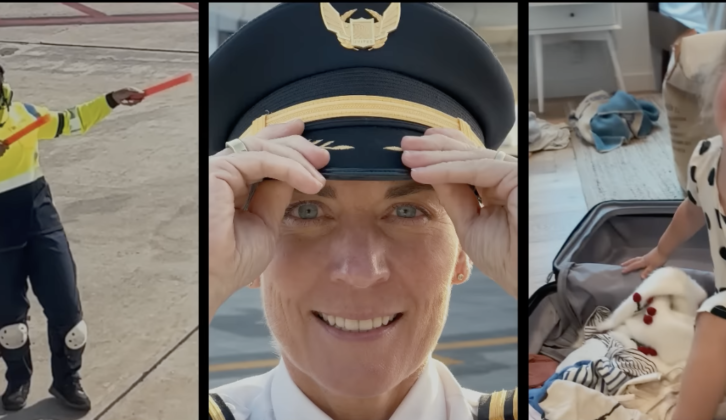(Image credit: United Airlines/YouTube)
BY JO HAMILTON
Source: corp.smartbrief.com, June 2022
Marketers and brands are flocking back to the travel sector.
Travel marketing is experiencing an uptick as businesses and consumers get back on the move following the easing of pandemic-related restrictions.
Marketers of airlines, rental car firms, US tourism and lodging providers invested almost $623 million in advertising from January through April this year, a 43% year-over-year rise from the same period in 2021, according to MediaRadar analysis.
Almost half of that travel marketing spend came from lodging advertisers, while airline ad spend was up 141% year-over-year. Spending from US tourism and rental car companies experienced year-over-year increases of 46% and 50%, respectively.
The research reveals nearly half of ad spend from lodging marketers went to TV, while 16% was invested in video. This is in comparison to a 27% investment in TV and a 42% investment in video from January through April in 2021.
But traditional media investment overall has declined since 2020, which “could indicate that some of these advertisers experienced success during their brief foray into digital formats” and the market should “expect spending on formats like video, Facebook and display to increase as we move through 2022,” MediaRadar states.
How travel brands are spending their ad dollars
United Airlines recently unveiled its first brand campaign in a decade, “Good Leads the Way,” which spotlights employees in an anthem 60-second spot and is running across TV, social, digital, out-of-home and streaming platforms.
“As we kick off the summer travel season, we are entering a historic post-pandemic era of commercial air travel with unprecedented demand levels,” Maggie Schmerin, head of global advertising and social media at United Airlines, told The Drum.
Booking.com and Etihad Airways are embracing Snapchat’s new Dynamic Travel Ads, which enable marketers to target the 76% of Snapchat users who are returning to pre-pandemic travel habits, and the 37% of millennial and Generation Z users who are more likely to book travel after seeing an ad, according to a Snap blog post.
“With travel demand seeing a continued strong recovery in Q1 2022, we were of course keen to capitalize by converting existing customers and, importantly, acquiring new ones,” Etihad Airways’ Phil Dodwell said about testing the new ad format.
Instagram has just got its first online travel agency, courtesy of Tripscout, a social media travel startup, TravelPulse reports.
Tripscout CEO and co-founder Konrad Waliszewski says the online agency is working with thousands of hotels around the world, explaining, “social media is the most effective channel for user acquisition, retention and conversion and Instagram is the most important platform for travel marketing.”
Our take on travel marketing
The resurgence in advertising spend by travel brands signals confidence in the return of travel habits to levels in line with those before the onset of the pandemic.
This confidence is backed by recent research, such as 86% of business travelers expecting to make at least one business trip over the next six months, according to a Quarterly Business Travel Tracker survey shared with SmartBrief.
And around 60% of Americans intend to make at least one trip this summer, per the US Travel Association, cited by PYMNTS.
It’s not just travel brands that should care about the travel market perking up. Marketers in various sectors can share in the joy by delivering relevant content to enhance consumers’ or business travelers’ experiences while they’re planning or away on trips.
For more insights like this, subscribe to our free newsletter.

